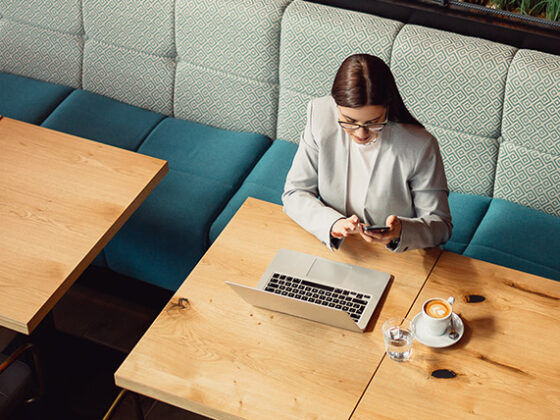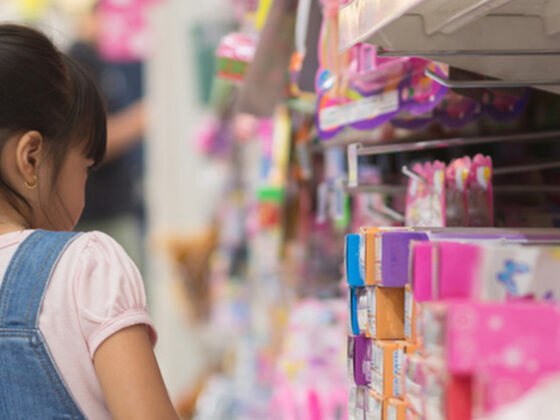Most of the people predicting pureplay and ecomm as the future of retail could not have foreseen what would really happen to the infrastructure when challenged the way it has been during the pandemic. We now realize that the future of retail is not Amazon (or Target or Walmart), and that Amazon was not the golden child everyone thought it was. They have the largest ecommerce infrastructure in the country, yet when retail closed, they had to curtail Prime shipping because they didn’t have the capacity to keep up with the demand. They were not prepared. No one was. There was no infrastructure in place to handle 100% online consumer demand. From manufacturing to the seamless delivery to consumers, every single point along the way highlighted the problem areas. There is no way everything can move to online only. Daphne Howland deep dives into the challenges of pureplay – with or without a pandemic.
Brick and Mortar Is the Future of Retail
If it wasn’t already clear, which it should have been, brick and mortar is the future of retail. But it cannot be the brick and mortar of the past. We need to leverage local, regional, and niche brands. We need to make malls interesting again. We need to focus on the experience. And we’re going to need to get to know customers all over again. Who are they? What do they want? Given our “new normal,” what are their new expectations and how do we help fulfill them?

Changes You’ll See Across Retail
The biggest changes are designed for health and safety compliance. The number of people allowed inside a store will be limited; there will be hand sanitizing stations and plexiglass shields at check-out counters. Many stores are completely closing fitting rooms; those who are leaving them open will quarantine unpurchased clothing that has been worn or modeled. Improved cleaning and screening standards will be essential. All department stores will remove sample makeup counters or move to a single disposable sample standard.
Leveraging Technology
From thermal scanners to monitoring technology that manages capacity to AI that helps deliver improved customer service, the future of retail will rely more than ever on technology. A recent survey revealed that 87% of consumers “prefer to shop in stores with touchless or robust [items are identified when put in the cart, no scanning required] self-checkout.”

Consumers Have Changed
For retailers, it will be important to remember that the customer whom you knew two months ago and the customer who walks into your store when you reopen are vastly different individuals. Priorities have shifted almost overnight. What you do now – how you adjust both your in-store approach and your omnichannel experience – will be critical. You should already be working on and implementing your post-pandemic strategy. Not sure where to begin? CBUS Retail hosted a virtual roundtable in May featuring Amy McCormick, Corporate Affairs Manager for The Kroger Company. Kroger has made their entire retail blueprint available for download here.
Moving Forward
For everyone in retail – from grocers who struggled in the beginning but have adapted remarkably well, to the fashion industry, which experienced perhaps the biggest decline – the future is anything but certain. What we know:
- From Zoom calls for work to ordering groceries online, consumers adapted very well to digital. There will continue to be a shift. This means your retail locations and your ecommerce solutions need to work together to present a seamless brand experience (yes, we’ve been telling you this for a long time; now it’s not an option).
- This may only be the first of many coronavirus pandemic waves, especially since social distancing protocols were largely ignored for the sake of the protests. Retailers need to anticipate at least a second wave. This means better data, less reliance on just-in-time inventory, more cash reserves, and better planning.
- You’ll need to plan how you’ll maintain social distancing, what your cleaning protocols will be, and who will be responsible for monitoring and enforcing those protocols. Customers will not frequent your business if they are not convinced that you – and they – are safe. Your locations must be meeting and exceeding minimum CDC standards. This means installing handwashing and sanitizing stations, reducing the number of occupants in your store, providing clear signage, and establishing policies to deal with everything from sick employees to what you’ll do after someone tries on clothes but doesn’t buy them.
Small Changes Won’t Be Enough to Retain Customers
For the retail industry, emerging from this pandemic may be comparable to the post-9/11 era in terms of how consumers responded to the uncharacteristic environment. When consumers finally started to recover from the shock and fear of 9/11, they sought out ways to be inspired, to forget, and to help. Post-pandemic, consumers are going to be seeking out those retailers that are committed to health, safety, and wellness – the ones that authentically commit to a higher standard and demonstrate that they are concerned more about protecting consumers and employees than making a profit. Consumers will also expect you to meet them where they are – both emotionally and physically. This means being able to provide online shopping with curbside delivery, even if you never have before. It means understanding that no matter when you reopen, people will be more sensitive about personal space and they’ll be looking for experiences that help them escape. And no matter what your brand, consumers better see you cleaning – often and efficiently.




